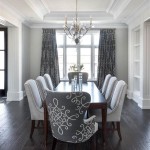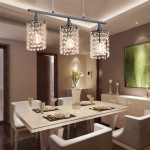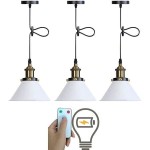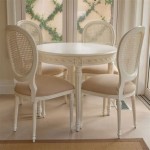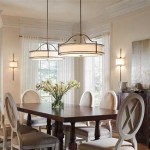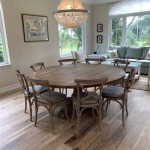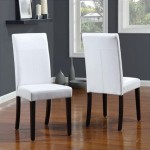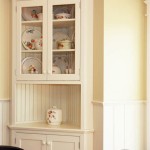Formal Dining Room Color Ideas: A Comprehensive Guide
The formal dining room, a space traditionally reserved for special occasions and carefully planned meals, demands an atmosphere of sophistication and elegance. Color plays a pivotal role in establishing this desired ambiance. Selecting the appropriate color palette requires careful consideration of the room's architectural features, natural lighting, existing furniture, and desired mood. This article explores various color options suitable for formal dining rooms, providing guidance for creating a refined and inviting space.
Understanding the Psychological Impact of Color
Before diving into specific color schemes, it is essential to understand the psychological effects different colors can evoke. These associations can influence the dining experience, impacting appetite, conversation, and overall comfort.
Red: Often associated with passion, energy, and stimulation, red can increase appetite and create a lively atmosphere. However, excessive use of red in a confined space can be overwhelming and create a sense of anxiety. In a formal dining room, red should be used strategically as an accent color, perhaps in artwork or textiles, rather than as the dominant wall color.
Blue: Known for its calming and serene qualities, blue can create a tranquil and sophisticated dining environment. Lighter shades of blue can expand the perception of space, while darker shades evoke a sense of formality and depth. It is important to note that certain shades of blue may suppress appetite; therefore, complementing blue with warmer tones is often advisable.
Green: Representing nature and growth, green can bring a sense of freshness and harmony to the dining room. It promotes relaxation and conviviality, making it a suitable choice for fostering enjoyable conversation. Similar to blue, different shades of green can create varying moods, from the light and airy feel of mint green to the rich and luxurious feel of emerald green.
Yellow: Associated with happiness, optimism, and energy, yellow can brighten a formal dining room and create a welcoming atmosphere. However, like red, excessive yellow can be overwhelming. Using muted or pastel yellows can provide warmth without being visually jarring. Consider incorporating yellow as an accent color or in subtle patterns.
Purple: Traditionally associated with royalty, luxury, and creativity, purple can add a touch of drama and sophistication to a formal dining room. Deeper shades of purple, such as eggplant or plum, can create a sense of intimacy and opulence. Lighter shades, like lavender or lilac, offer a more delicate and romantic feel. Purple pairs well with metallic accents and neutral tones.
Neutral Colors: Colors such as beige, gray, cream, and white provide a versatile backdrop for a formal dining room. They allow for flexibility in furniture and décor selection and can be easily adapted to different styles. Neutral colors can be layered to create depth and texture, and they serve as an excellent foundation for incorporating accent colors.
Classic and Timeless Color Schemes
Certain color combinations have proven to be consistently successful in formal dining rooms, offering a sophisticated and enduring aesthetic.
Monochromatic Scheme: A monochromatic scheme involves using different shades and tints of a single color. For example, a dining room could feature walls painted in a light gray, complemented by furniture in darker gray tones and accents in silver or charcoal. This creates a cohesive and elegant look that is both calming and visually appealing.
Complementary Color Scheme: Complementary colors are those that sit opposite each other on the color wheel, such as blue and orange, or red and green. Using complementary colors can create a dynamic and visually stimulating space. However, it's crucial to balance the intensity of these colors. For instance, a dining room could have light blue walls and accents of muted peach or coral, rather than vibrant orange.
Analogous Color Scheme: An analogous color scheme involves using colors that are adjacent to each other on the color wheel, such as blue, blue-green, and green. This creates a harmonious and soothing atmosphere. Analogous color schemes are often used to create a sense of flow and continuity within a space.
Neutral with Metallic Accents: This combination is a classic choice for formal dining rooms. Walls painted in a neutral color, such as cream or beige, are paired with furniture and accessories featuring metallic accents, such as gold, silver, or bronze. This creates a sophisticated and elegant look that is both timeless and versatile. Consider using metallic wallpaper or stencils for added visual interest.
Classic Black and White: A black and white color scheme is always a stylish and sophisticated choice. This can be implemented in various ways, such as white walls with black furniture or a black and white patterned wallpaper. Accents of a vibrant color, such as red or gold, can add a touch of drama and visual interest.
Factors to Consider When Choosing Colors
The selection of colors for a formal dining room is not simply a matter of personal preference. Several factors should be carefully considered to ensure a cohesive and harmonious result.
Room Size and Lighting: Smaller dining rooms benefit from lighter colors, which can create the illusion of more space. Darker colors can make a small room feel cramped and claustrophobic. Natural lighting also plays a crucial role. Rooms with ample natural light can handle darker colors more effectively than rooms with limited natural light. In rooms with less natural light, lighter and brighter colors are essential for creating a welcoming atmosphere. Using mirrors can help to reflect light and further enhance the sense of space.
Architectural Features: The existing architectural features of the dining room should also be taken into account. For example, if the room has ornate moldings or wainscoting, the color scheme should complement these features. Consider painting the moldings a different color than the walls to highlight their detail. If the room has a fireplace, the color scheme should draw attention to this focal point.
Furniture and Decor: The color of the dining room furniture and decor should also influence the choice of wall colors. Consider the existing colors of the dining table, chairs, and sideboard. Walls should complement, not clash with, the existing furniture. If the furniture is dark, lighter walls will help to create contrast and prevent the room from feeling too heavy. Artwork, rugs, and other accessories can also be used to tie the color scheme together.
Desired Mood: The desired mood of the dining room is another important consideration. If the goal is to create a formal and sophisticated atmosphere, darker and richer colors may be appropriate. If the goal is to create a more relaxed and inviting atmosphere, lighter and brighter colors may be more suitable. Consider the frequency with which the dining room will be used. If it is only used for special occasions, a more formal and dramatic color scheme may be appropriate. If it is used more frequently, a more relaxed and inviting color scheme may be preferred.
Personal Preferences: While it's important to consider the factors mentioned above, it's also crucial to choose colors that are personally appealing. After all, the dining room should be a space that is enjoyed and appreciated. Consider browsing through interior design magazines and websites to gather inspiration. Create a mood board with colors and images that resonate. Sample paint colors on different walls in the dining room to see how they look in different lighting conditions. Ultimately, the best color scheme is one that reflects personal style and creates a welcoming and enjoyable dining experience.

The Best Dining Room Paint Color

40 Best Dining Room Paint Colors Color Schemes For Rooms
:max_bytes(150000):strip_icc()/MaryPatton_May2020-6-8e9f410c0f1d4fe28484853ea47b1d5c.jpg?strip=all)
40 Perfect Dining Room Colors For Any Style

8 Beautiful Dining Room Paint Ideas Paintzen
Why You Shouldn T Give Up On Your Formal Dining Room Client Project Reveal Teaselwood Design

5 Elegant Dining Room Colors We Love Tinted By Sherwin Williams

The Best Beamin Moore Dining Room Paint Colors

Dining Room Paint Colors Transitional Clare

The Best Dining Room Paint Color

10 Formal Dining Room Ideas From Top Designers

